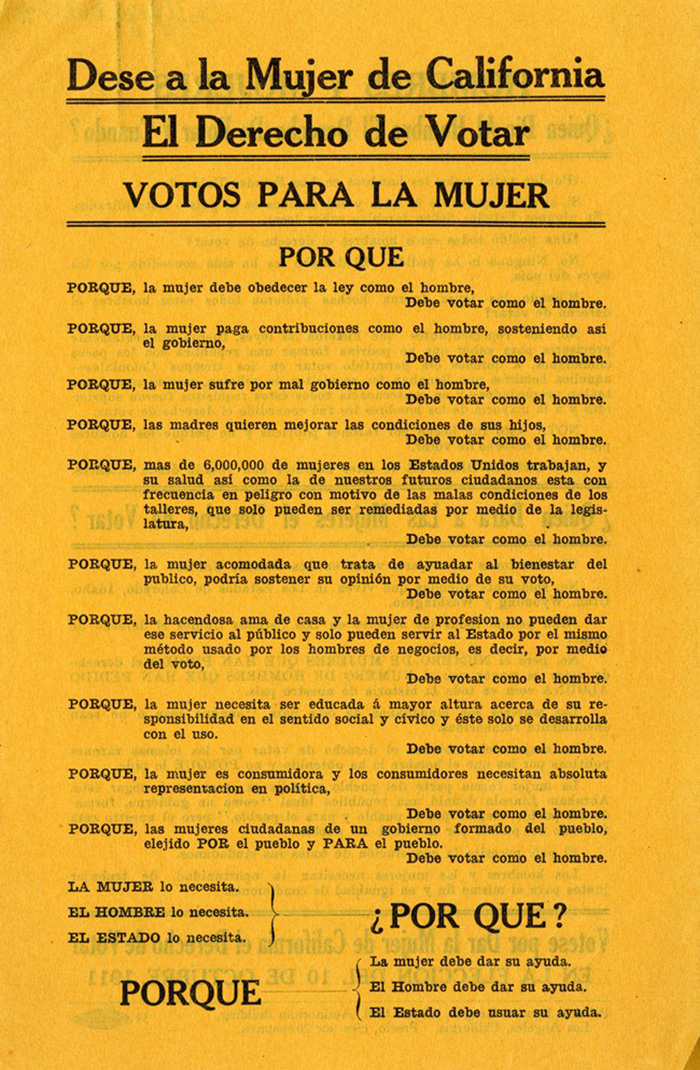Latinx Suffrage
Page Content
 This pamphlet, by the Los Angeles Political Equality League, makes the case for woman suffrage in Spanish. In the successful 1911 California campaign, suffrage organizations, which were often led by and centered on the concerns of Anglo women, made efforts to gain the support of the Latinx community. (Courtesy of Women’s Suffrage and Equal Rights Collection, Ella Strong Denison Library, Scripps College, Claremont, CA) Enlarge Image
This pamphlet, by the Los Angeles Political Equality League, makes the case for woman suffrage in Spanish. In the successful 1911 California campaign, suffrage organizations, which were often led by and centered on the concerns of Anglo women, made efforts to gain the support of the Latinx community. (Courtesy of Women’s Suffrage and Equal Rights Collection, Ella Strong Denison Library, Scripps College, Claremont, CA) Enlarge Image
Though long discriminated against at the local level, the U.S. Latinx community has an unusual history of enfranchisement by the federal government. The 1848 Treaty of Guadalupe Hidalgo, which ended the Mexican-American War, granted citizenship to those Mexicans living in regions ceded to the U.S. However, a 1790 immigration law declared that only “free white” people could become citizens. Federally, this meant that Latinx people were legally “white” because they were naturalized, not the other way around like other immigrants at the time. However, many white Americans still considered people from Latin America their social inferiors. Thus, Latinx people in the U.S. were reluctantly granted citizenship but often forced into segregated communities, denied economic opportunities or voting rights, and faced violent reprisals for challenging Euro American hegemony.
The Latinx community in the U.S. began fighting for change after World War II and during the civil rights era, most vocally in Texas and California. Following the 1965 Voting Rights Act and growth of the Chicano Movement in the 1960s and 70s, Latinx Americans have been increasingly successful in ending discriminatory restrictions on their voting rights. Though significant barriers to voting still exist, the Latinx community represents a growing body of voters increasingly courted by politicians on both sides of the aisle.
Next: Jewish American Woman Suffrage >